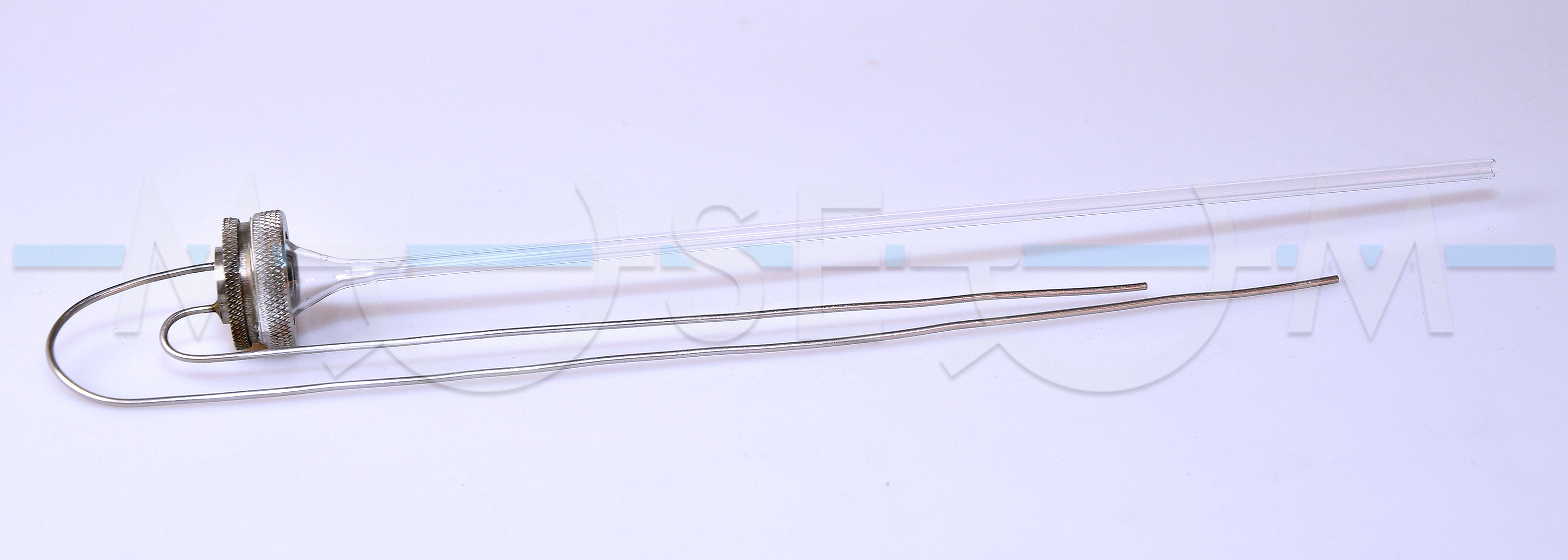Categories of exhibits
Molecular separator for GC/MS
Exhibit no. 414
In the early days of gas chromatography, packed columns were operated at high flow rates of carrier gas. Since a large amount of gas could not be pumped away by the vacuum system, a gas flow reducing devices called separators were used in GC/MS. Separators of different design including a jet, glass fritted tube, or diffusion membrane were used. Besides flow splitting, separators also provided sample enrichment. While most of the separators utilized preferential diffusion of the small carrier gas particles through a frit, or from a jet to a vacuum, membrane separators worked on a different principle. They made use of a silicone-rubber membrane, which is permeable for organic molecules but not for gases like helium. Organic molecules easily crossed the membrane, while the carrier gas was removed from the GC side of the membrane by a vacuum pump. Despite their efficiency, membrane separators suffered from discrimination effects and caused broadening of chromatographic peaks. Although separators were once in widespread use, this is no longer the case. They disappeared almost completely with the introduction of fused-silica capillary GC columns.
The exhibit is a membrane separator, which was likely used for coupling GC to MS 920 sector mass spectrometer manufactured by AEI Ltd. in 1969. It consists of a small cylindrical chamber with two metal capillaries. The chamber is closed by a glass frit, which is coated with a membrane and fused to a glass tube. The capillaries served for the GC effluent inlet and outlet while the glass tube supplied the enriched sample to the ion source.





